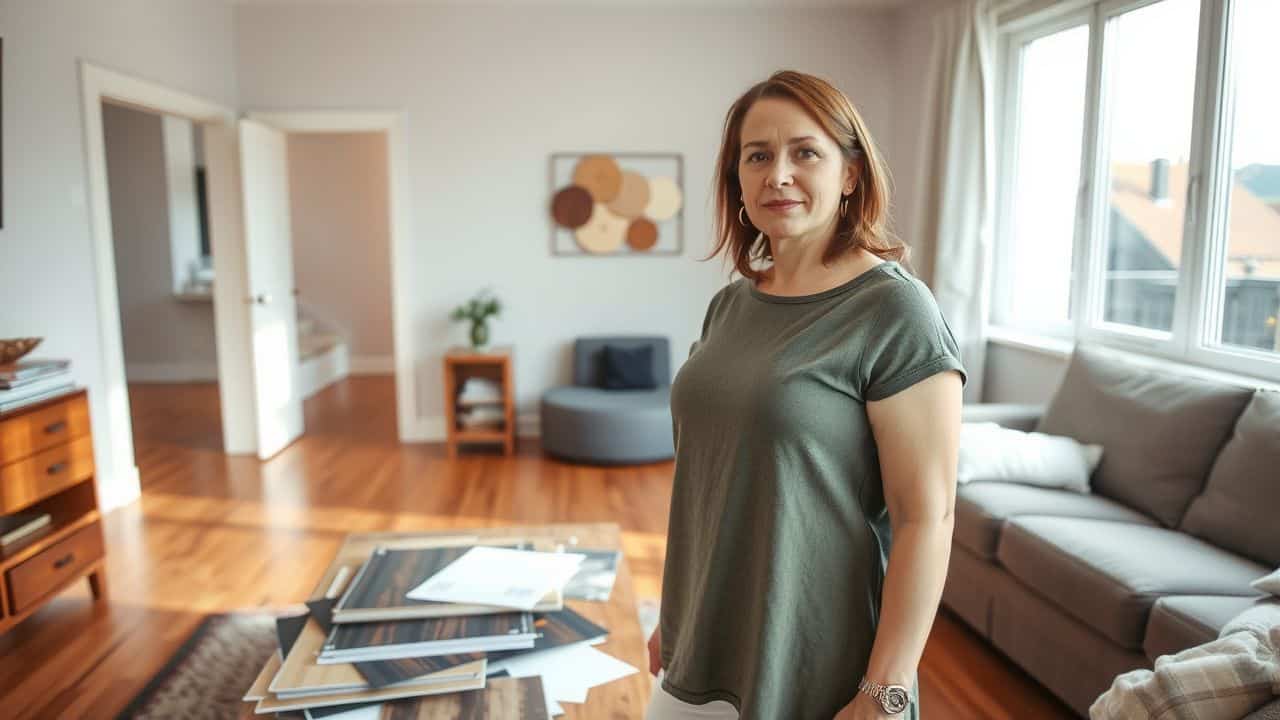Are you tired of staring at dull, worn-out floors? Picking the right flooring can make or break your home’s look. Did you know there are eight main types of flooring to choose from? This guide will walk you through each option, helping you find the perfect fit for your space.
Get ready to transform your home from the ground up!
Key Takeaways
Eight main types of flooring exist: laminate, hardwood, engineered wood, vinyl, tile, stone, carpet, and specialized options like cork and rubber.
Laminate flooring costs $2 to $8 per square foot and can last 15 to 30 years with proper care.
Engineered wood flooring is more affordable than solid hardwood, costing $4-7 per square foot compared to $8-15 for hardwood.
Vinyl flooring comes in three types: luxury vinyl tile (LVT), luxury vinyl plank (LVP), and sheet vinyl, each suited for different areas of the home.
Stone flooring, like marble, granite, and slate, needs regular care with pH-neutral cleaners and sealing every 1–3 years to maintain its beauty and durability.
Table of Contents
Laminate Flooring
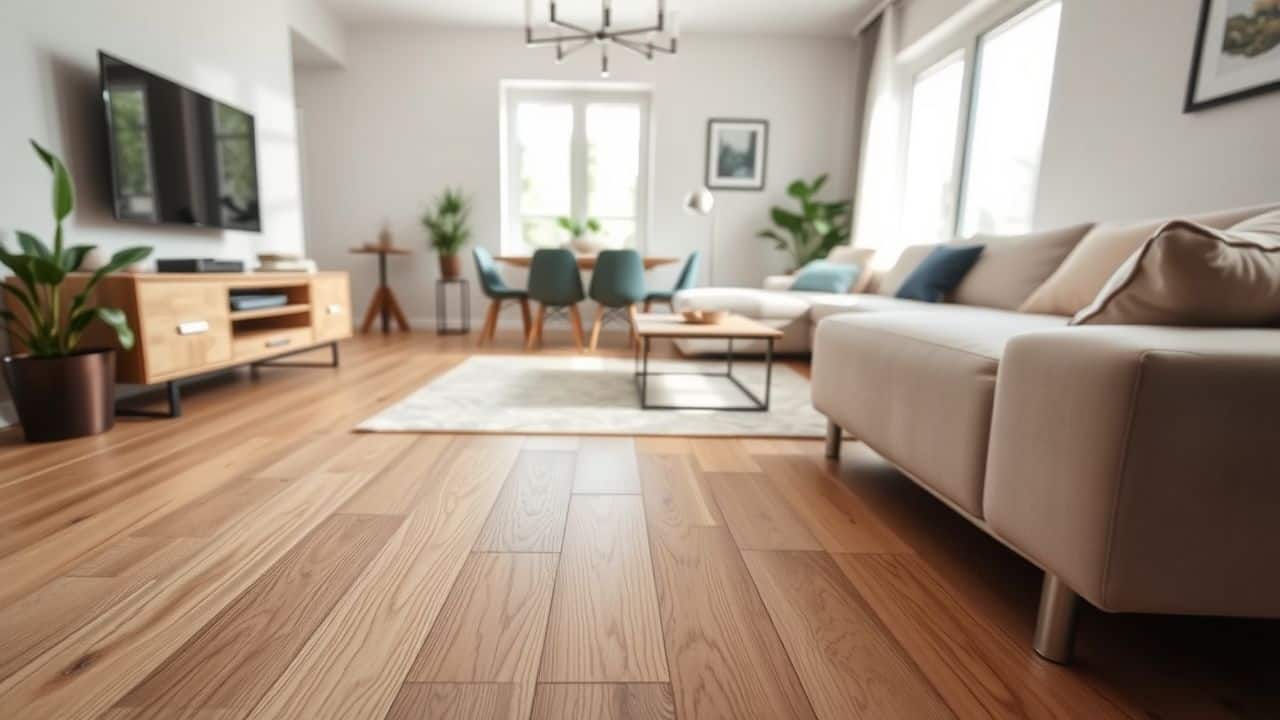
Laminate flooring gives you the look of wood without the hefty price tag. It’s tough, easy to clean, and comes in tons of styles to match your home’s vibe.
Design Flexibility
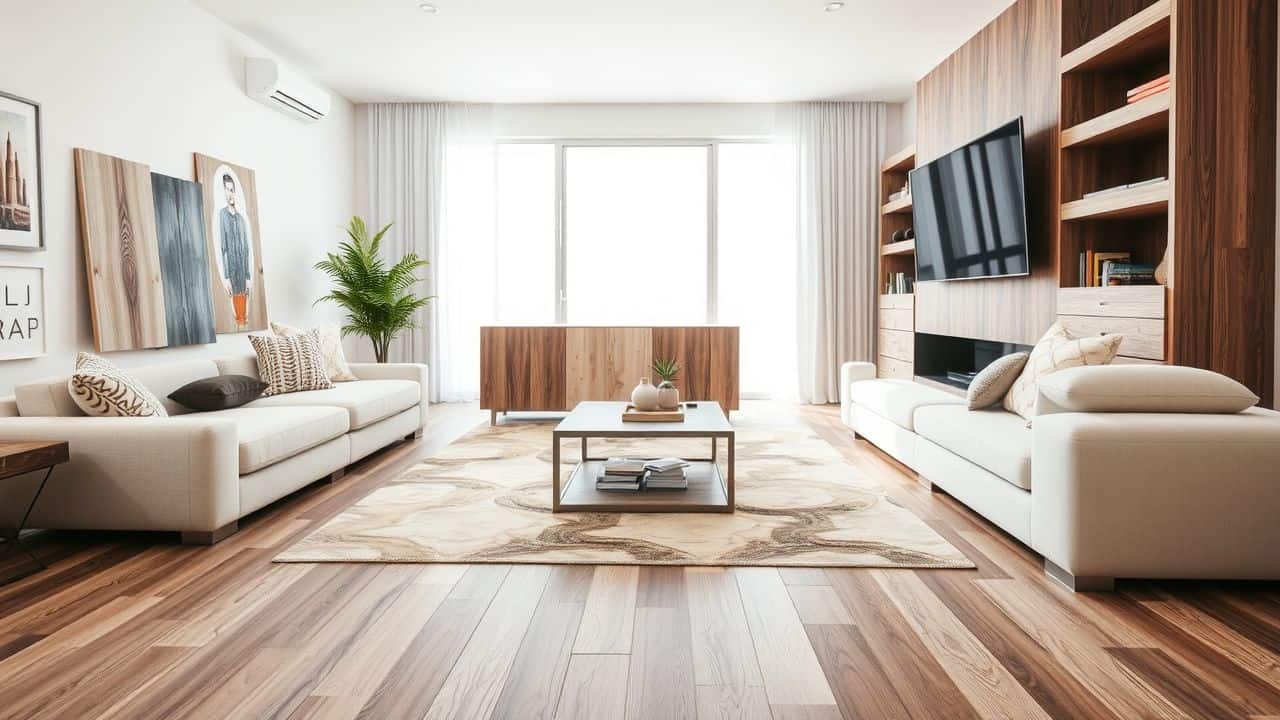
Laminate flooring offers a world of design options. You can pick from many colors, textures, and styles to match your taste. Want a rustic look? Go for handscraped or weathered designs.
Prefer a modern vibe? Try sleek, wide planks. The choices are endless, letting you create the perfect look for your home.
Mix it up with different plank widths or lay them diagonally for extra flair. The quality of your laminate flooring matters too.
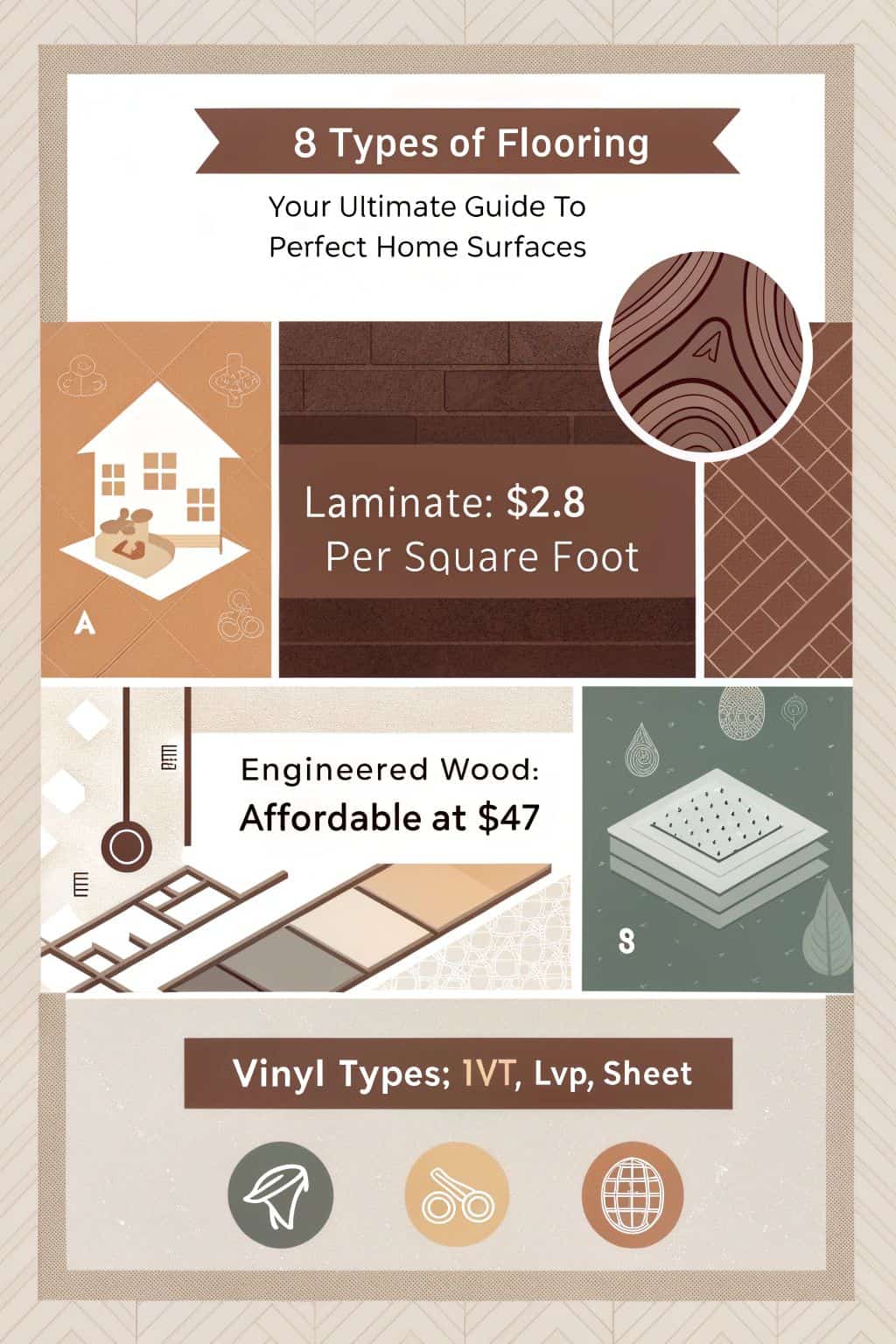
Good laminate can mimic real wood so well, your guests might not spot the difference. Next, let’s explore the pros and cons of this versatile flooring option.
Laminate flooring: where style meets practicality in your home.
Advantages and Limitations

Laminate flooring packs a punch with its perks. It’s budget-friendly, costing just $2 to $8 per square foot. This makes it a smart pick for folks watching their wallet. Plus, it’s tough as nails.
The wear layer fights off scratches, making it great for busy areas. Got kids or pets? No sweat. Laminate can take the heat. It’s also a breeze to install. Many types click together like puzzle pieces.
You might even tackle it yourself and save some cash.
But hold your horses – laminate isn’t perfect. It can’t be refinished like hardwood. If it gets badly damaged, you’ll likely need to replace it. That’s a bummer if you’re hoping for a floor that lasts forever.
Also, it’s not a fan of water. Too much moisture can make it swell or warp. So, it’s not the best choice for bathrooms or laundry rooms. Still, with proper care, laminate can last 15 to 25 years.
Some folks even stretch that to 30 years. Not too shabby for a budget-friendly floor!
Hardwood Flooring
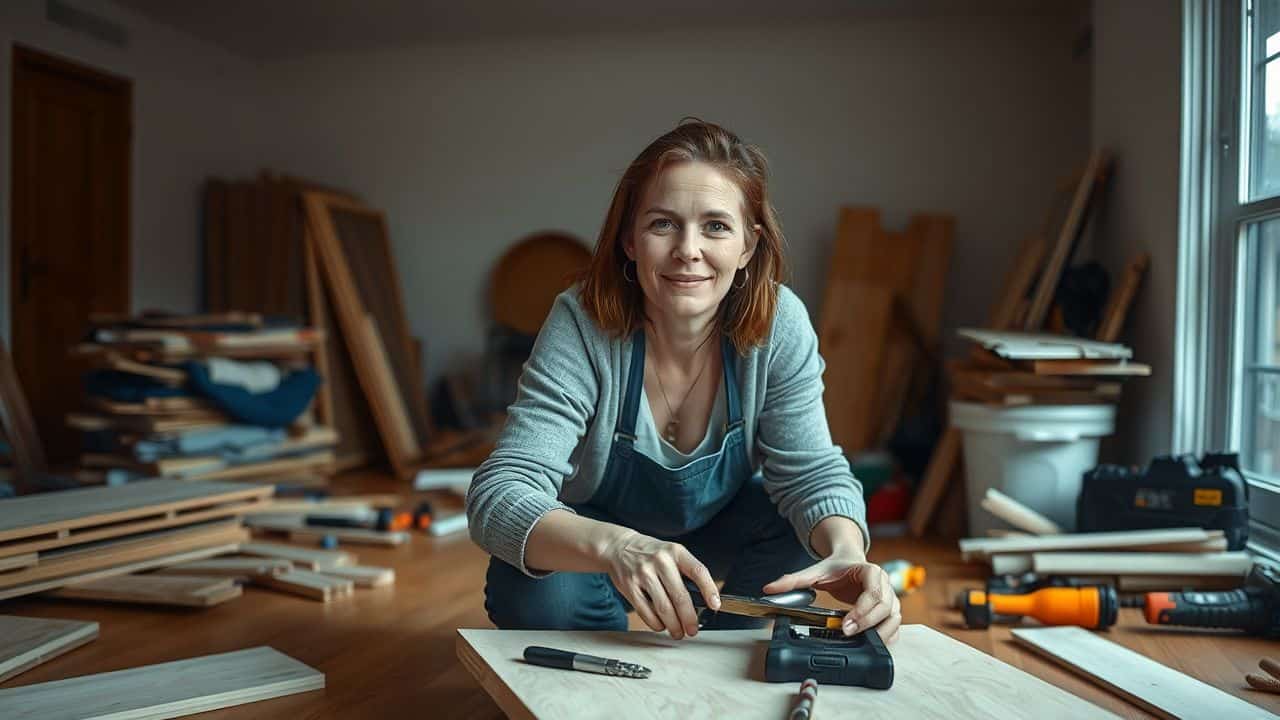
Hardwood flooring brings timeless beauty to any home. It’s a top pick for those who want a classic look that lasts for years.
Benefits and Aesthetic Appeal

Hardwood floors bring timeless beauty to any home. They add warmth and character that lasts for decades. Many homeowners love how hardwood makes rooms feel bigger and brighter. These floors also boost your home’s value, which is great if you ever decide to sell.
Hardwood isn’t just pretty – it’s practical too. It improves air quality by trapping fewer allergens than carpet. Plus, it helps with sound control by soaking up noise. I once lived in an old house with original oak floors.
The rich color and natural grain patterns were stunning. They made every room feel special. Next, let’s look at what it takes to keep hardwood looking its best.
Maintenance Requirements and Costs
Moving from the beauty of hardwood, let’s talk about keeping it lovely. Hardwood floors need care to stay stunning. Regular sweeping and dry mopping are must-dos. These simple tasks keep dirt from scratching your floors.
Every 7–10 years, your floors might need a refresh. This means sanding and refinishing, which can cost a pretty penny. But don’t fret! With proper care, hardwood can last up to 100 years.
That’s a century of elegant floors under your feet. The price tag for upkeep? It varies, but expect to spend between $6 to $25 per square foot for pro help. DIY can save cash, but be sure you know what you’re doing.
Engineered Wood Flooring
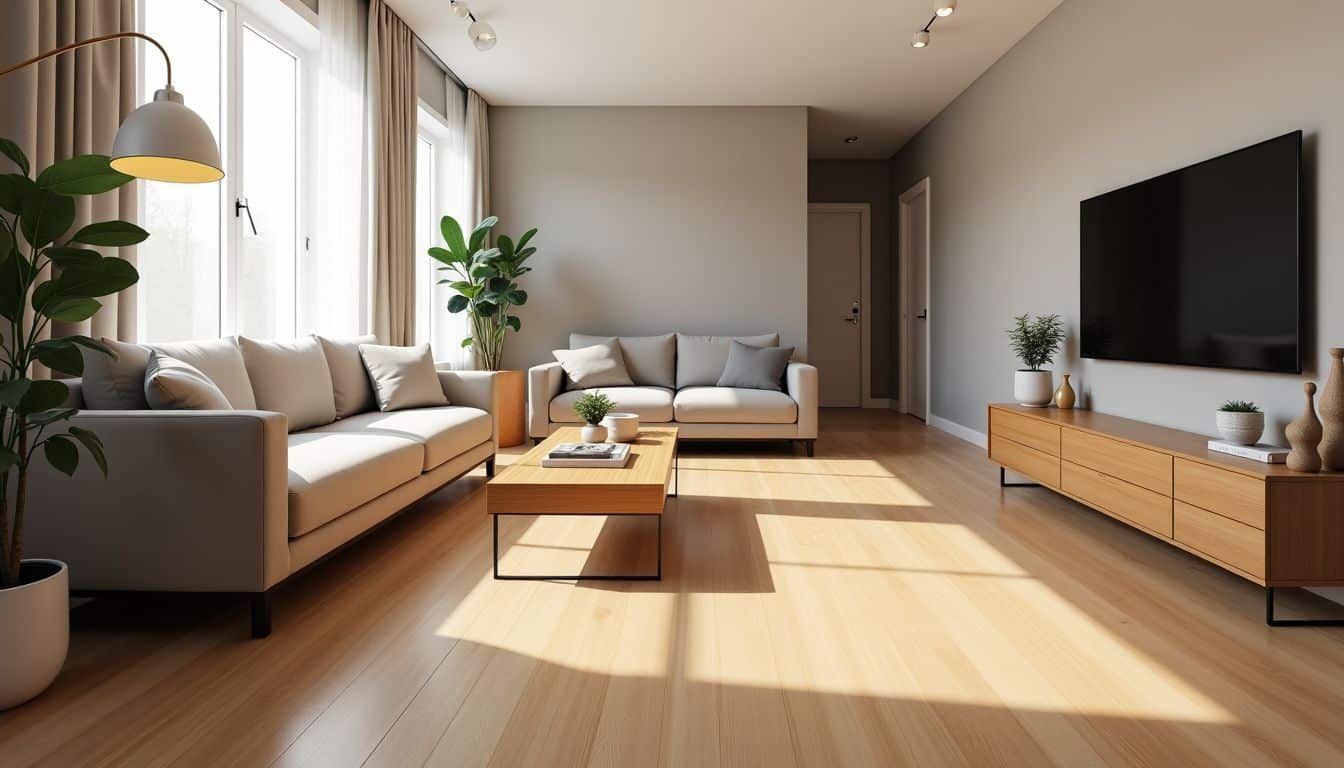
Engineered wood flooring gives you the look of real wood at a lower cost. It’s made of layers, with a top layer of real wood and a core of plywood, making it more stable than solid hardwood.
Installation Process and Longevity
Engineered wood flooring offers a smart choice for busy homes. It combines beauty and durability, making it perfect for active families.
- Measure your room carefully. Use a tape measure to get exact dimensions.
- Choose your tools wisely. You’ll need a saw, flooring nailer, and moisture meter.
- Let the wood rest. Place it in your home for 3–5 days before installing.
- Prep the subfloor. Make sure it’s clean, dry, and level.
- Start laying planks. Stagger end joints for better stability.
- Secure planks with nails or glue. Follow the maker’s instructions closely.
- Finish the edges. Use trim pieces for a polished look.
- Maintain your floor. Sweep often and damp mop as needed.
- Expect long-lasting beauty. Well-cared-for engineered wood can last decades.
- Enjoy increased home value. Wood floors often boost resale prices.
Cost Comparison with Hardwood
Now that we’ve covered installation, let’s discuss costs. Hardwood floors are beautiful, but they can be expensive. So how does engineered hardwood compare?
Here’s a quick comparison:
| Flooring Type | Cost per Square Foot |
|---|---|
| Engineered Hardwood | $4-7 |
| Solid Hardwood | $8-15 |
As shown, engineered hardwood is the more economical choice. It’s nearly half the price of solid hardwood. But this doesn’t mean you’re compromising on quality. Engineered hardwood offers more options in wood types and finishes. You get the appearance of hardwood at a lower cost.
I once assisted a friend in redoing her living room floor. We selected engineered oak, and it appears identical to solid hardwood. Her guests can’t distinguish the difference, but her wallet certainly can! Moreover, she had a broader range of styles to choose from. It’s an advantageous choice in my opinion.
These prices are just for the materials. Labor costs vary, so obtain quotes from local professionals. Always include extras like underlayment or trim in your budget. With careful shopping, you can achieve a high-end look at a more affordable price.
Vinyl Flooring
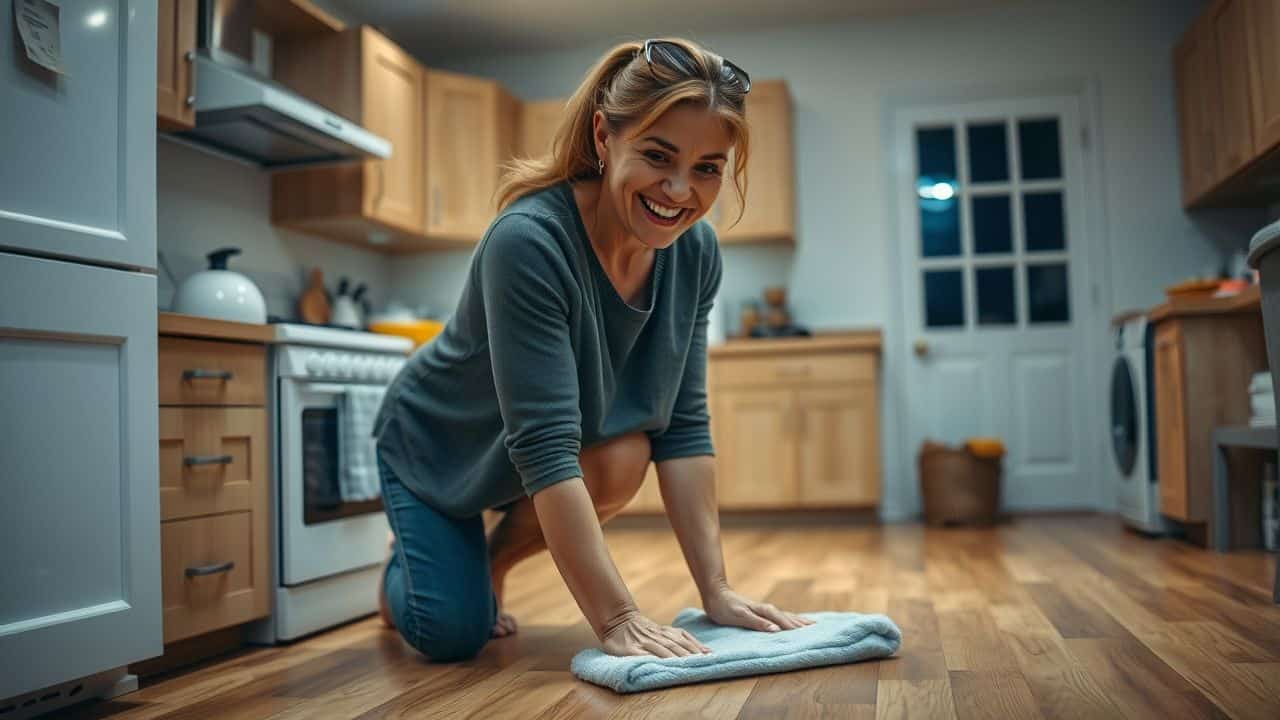
Vinyl flooring is tough and easy to clean. It comes in many styles, from wood-look planks to stone-like tiles.
Varieties: Tile, Plank, and Sheet
Vinyl flooring comes in three main types, each with its own unique features. These varieties offer different looks and installation methods to suit various spaces and preferences.
- Luxury Vinyl Tile (LVT):
- Mimics the look of ceramic or stone tiles
- Easy to install and replace individual pieces
- Great for bathrooms and kitchens due to water resistance
- Available in various sizes and patterns
- Luxury Vinyl Plank (LVP):
- Replicates the appearance of hardwood flooring
- Installed using floating tongue-and-groove or glue-down methods
- Ideal for living rooms and bedrooms
- Comes in different wood grain patterns and colors
- Sheet Vinyl:
- Sold in large, continuous rolls
- Perfect for spaces with minimal seams, like laundry rooms
- Offers seamless water protection
- Available in a wide range of designs and patterns
Each type of vinyl flooring boasts a wear layer ranging from 4 to 40 millimeters thick, providing scratch and stain resistance. The next section will explore the best areas for installing these vinyl flooring options in your home.
Best Areas for Installation
Vinyl flooring shines in rooms that see lots of spills and foot traffic. It’s a champ in kitchens, where it can handle dropped pots and spilled juice with ease. Bathrooms love vinyl too, as it laughs in the face of water splashes.
For those who want to take water resistance up a notch, consider a wet room. Mudrooms and laundry areas also benefit from vinyl’s tough nature.
Vinyl flooring is like a superhero cape for your home’s busiest spaces.
Families with kids and pets often pick vinyl for high-traffic zones. Its durability means it can take a beating and keep on looking good. Plus, it’s a breeze to clean, which is music to any busy mom’s ears.
Vinyl comes in many styles, so you can get the look you want without breaking the bank or your back with upkeep.
Tile Flooring

Tile flooring brings a classic look to any room. It’s tough, easy to clean, and comes in many styles. You can choose from ceramic or porcelain tiles, each with its own perks.
Comparison: Ceramic versus Porcelain
Ceramic and porcelain tiles are popular choices for home flooring. Let’s compare these two options to help you decide which suits your needs best.
| Feature | Ceramic Tiles | Porcelain Tiles |
|---|---|---|
| Cost | $1 to $5 per square foot | $3 to $10 per square foot |
| Durability | Good | Excellent |
| Water Resistance | Moderate | High |
| Lifespan | Shorter | Longer |
| Weight | Lighter | Heavier |
| Design Options | Wide range | Extensive variety |
| Installation | Easier to cut and install | Requires special tools |
| Best Use | Indoor areas with less foot traffic | High-traffic areas, indoors and outdoors |
Ceramic tiles are budget-friendly and easy to install. They work well in bathrooms and kitchens. Porcelain tiles cost more but last longer. They’re great for busy areas and outdoor spaces. Both types come in many styles. Your choice depends on your budget and needs.
Recommended Installation Areas
Tile flooring shines in high-traffic areas. Kitchens, bathrooms, and entryways benefit from its durability. Ceramic tiles work great in laundry rooms and dining spaces too. They resist water and stains, making cleanup a breeze.
For bathrooms, porcelain tiles are the top pick. They’re denser and more water-resistant than ceramic. Natural stone tiles add luxury to kitchens and baths. Their unique patterns create a one-of-a-kind look.
Tiles are like a sturdy friend – always there when you need them most, says home designer Sarah Lee.
Let’s explore how vinyl flooring compares to these hardy options.
Stone Flooring
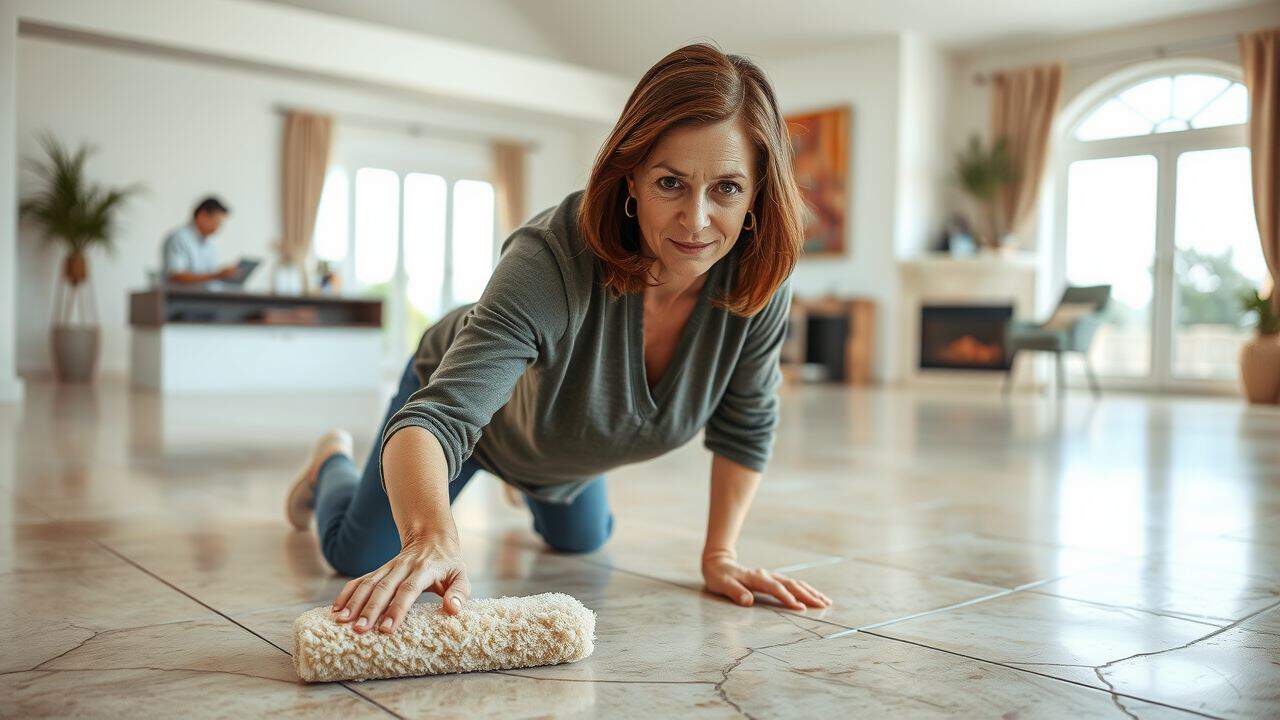
Stone flooring adds a touch of nature to your home. It’s tough and looks great, but needs some extra care to keep it shiny.
Varieties: Marble, Granite, Slate
Stone flooring brings elegance and durability to any home. Let’s explore three popular types of stone flooring that can transform your space.
- Marble: This classic stone exudes luxury. Its unique veining patterns create a one-of-a-kind look in every slab. Marble works well in bathrooms and entryways, adding a touch of glamour.
- Granite: Known for its strength, granite resists scratches and heat. It comes in a wide range of colors and patterns, fitting various design styles. Granite is perfect for high-traffic areas like kitchens.
- Slate: This non-slip surface offers both beauty and safety. Slate’s natural texture adds depth to any room. It’s great for outdoor spaces too, as it stands up well to weather.
- Maintenance: All stone floors need regular care. Sweep often and mop with pH-neutral cleaners to keep them looking their best. Avoid harsh chemicals that can damage the stone’s surface.
- Cost: Stone flooring can be pricey upfront. But its long life and timeless appeal make it a smart investment. It can even boost your home’s resale value.
- Installation: Stone is heavy and needs a strong subfloor. Professional installation is often best to ensure proper fit and prevent future issues.
Maintenance Tips
Stone flooring adds elegance to any home. Here are some tips to keep it looking its best:
- Sweep daily. Dirt and grit can scratch the surface over time.
- Mop weekly with warm water and a pH-neutral cleaner. Avoid harsh chemicals that can damage the stone.
- Seal natural stone every 1–3 years. This protects against stains and etching.
- Clean spills right away. Some liquids can stain if left too long.
- Use rugs or mats in high-traffic areas. These catch dirt before it reaches the stone.
- Avoid dragging heavy items across the floor. This can scratch or chip the surface.
- Polish occasionally to restore shine. Use a stone-specific polish for best results.
- Check for loose or cracked tiles. Fix these quickly to prevent further damage.
- Protect from direct sunlight. UV rays can fade some types of stone over time.
- Hire pros for deep cleaning once a year. They have special tools to remove tough stains.
Next, let’s look at carpet flooring and its unique care needs.
Carpet
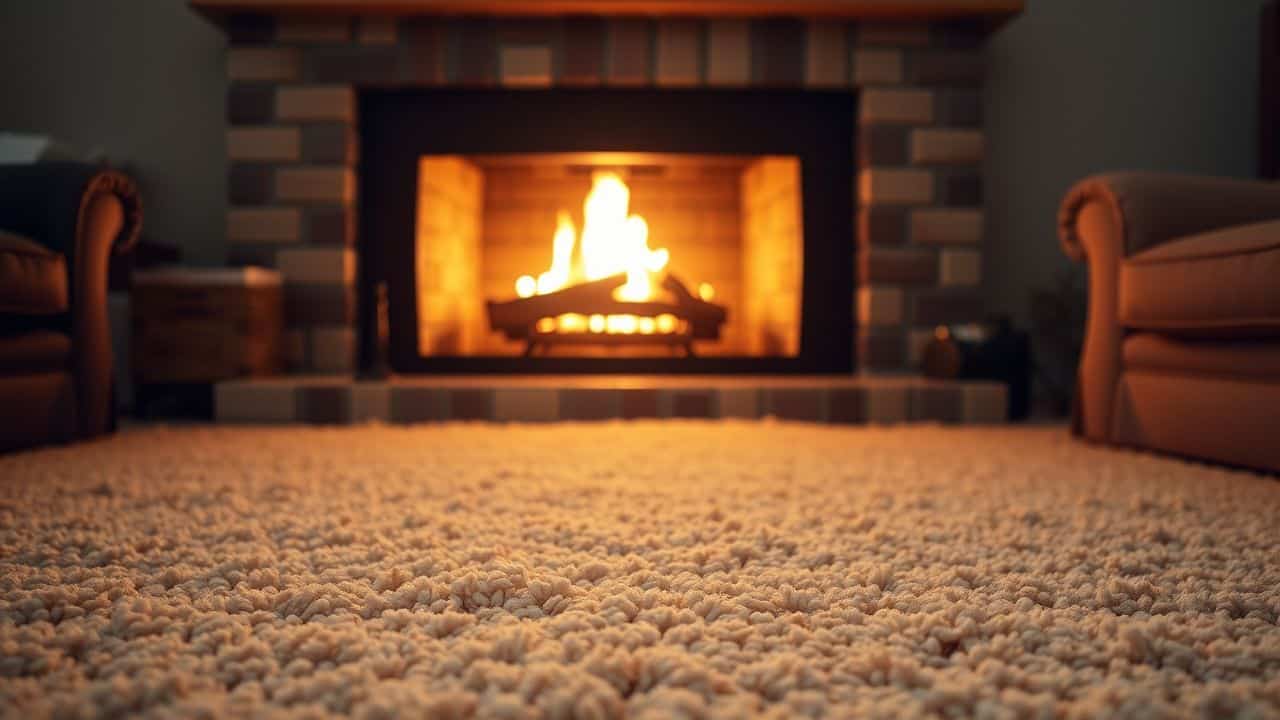
Carpet brings warmth and comfort to any room. It comes in many styles, from plush wool to durable nylon, each with its own feel and care needs.
Choices: Wool, Nylon, Polyester
Carpet choices can make or break your home’s comfort. Let’s explore wool, nylon, and polyester options to help you pick the perfect fit.
- Wool Carpets
- Natural and eco-friendly
- Soft and cozy underfoot
- Great for living rooms and master bedrooms
- Resists stains naturally
- Needs careful cleaning to last long
- Pricier than synthetic options
- Nylon Carpets
- Super tough and long-lasting
- Perfect for busy areas in your home
- Handles kids and pets with ease
- Comes in many colors and styles
- Easy to clean and maintain
- Costs less than wool but more than polyester
- Polyester Carpets
- Fights stains like a champ
- Soft and comfy to walk on
- Best for quiet spots like bedrooms
- Comes in bright, lasting colors
- Made from recycled materials sometimes
- Budget-friendly option for your home
- Eco-Friendly Choices
- Recycled polyester saves plastic from landfills
- Renewable wool is a green pick
- Low VOC options keep your air clean
- Some brands use plant-based dyes
- Traffic Considerations
- High-traffic areas need tough nylon
- Low-traffic spots work well with polyester
- Wool suits medium-traffic living spaces
- Cleaning and Care
- Nylon is easiest to clean
- Polyester resists water-based stains
- Wool needs special care to stay nice
- Cost Comparison
- Polyester is often cheapest
- Nylon sits in the middle range
- Wool tends to be most expensive
- Durability Factors
- Nylon lasts longest under heavy use
- Wool holds up well with proper care
- Polyester may flatten in busy areas
Comfort Levels and Cleaning Tips
Now that we’ve covered carpet materials, let’s talk about comfort and care. Carpets offer a cozy feel underfoot and keep your home warm. Here’s what you need to know:
- Comfort: Carpets provide a soft, cushioned surface. They’re great for kids playing or adults relaxing.
- Safety: The non-slip nature of carpets reduces fall risks. This is key for homes with young children or older adults.
- Noise reduction: Carpets absorb sound, making your home quieter. This helps create a peaceful environment.
- Air quality: Carpets trap dust and allergens. Regular cleaning can improve your home’s air.
- Cleaning routine: Vacuum at least once a week. This keeps your carpet looking fresh and extends its life.
- Spills: Act fast when accidents happen. Blot, don’t rub, to avoid spreading the stain.
- Deep cleaning: Hire pros once a year for a thorough clean. This removes deep-set dirt and refreshes your carpet.
- Shoes off: Ask guests to remove shoes. This keeps outdoor dirt from your carpet.
- Furniture marks: Use furniture pads. They prevent dents in your carpet from heavy items.
- Pet care: Brush pets often to reduce shedding on your carpet. Clean pet accidents quickly to avoid odors.
Specialized Flooring Options
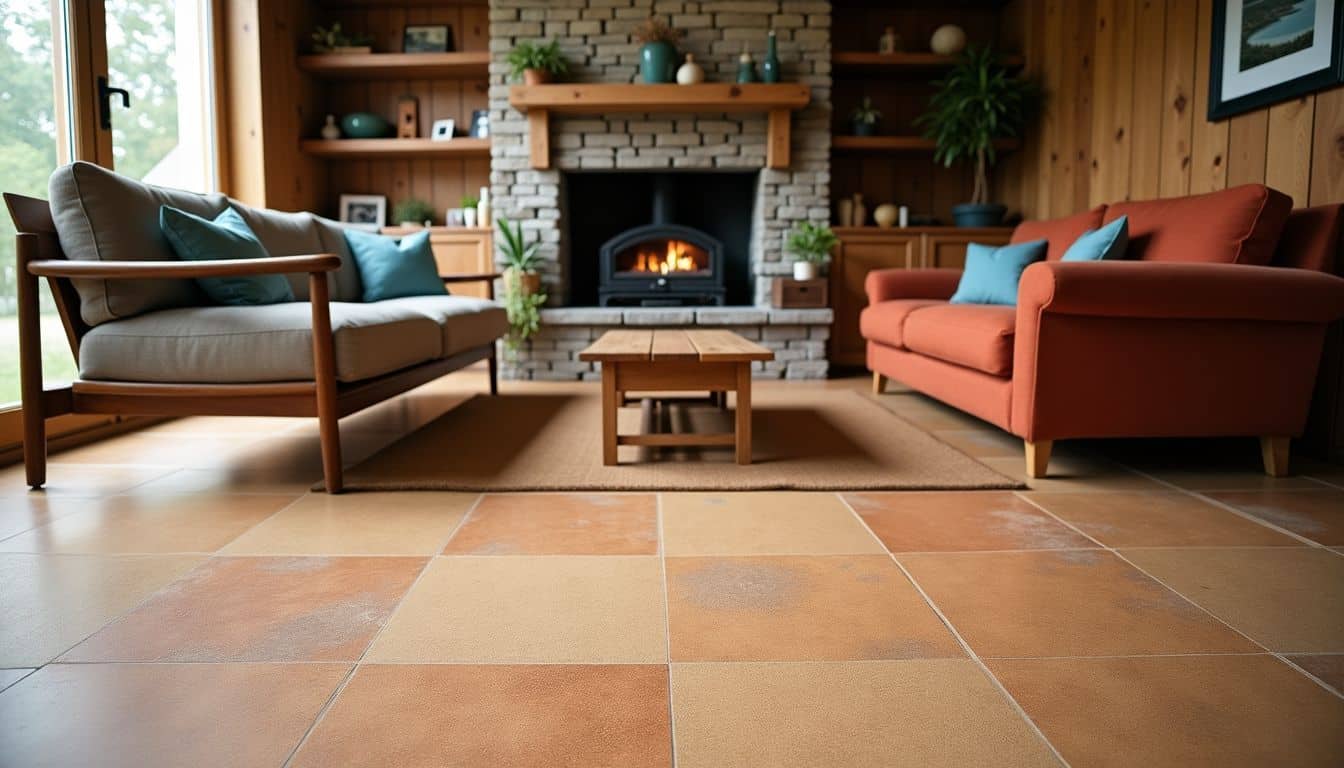
Cork and rubber floors offer cool choices for picky homeowners. These options give comfort and style for special needs.
Cork and Rubber Flooring Choices
Cork and rubber flooring offer unique benefits for your home. These options provide comfort and durability while being eco-friendly choices.
- Cork flooring:
- Made from tree bark that grows back
- Soft and warm underfoot
- Natural insulator for sound and temperature
- Resists mold and mildew
- Easy to clean with a damp mop
- Rubber flooring:
- Tough and long-lasting
- Great for high-traffic areas like entryways
- Slip-resistant, perfect for gyms or playrooms
- Comes in various colors and patterns
- Absorbs shock, reducing joint stress
- Sustainability:
- Cork is harvested without harming trees
- Rubber can be made from recycled tires
- Both options are biodegradable
- Lower carbon footprint than many other floors
- Installation:
- Cork often comes in click-lock planks
- Rubber is available in tiles or sheets
- Both can be glued down for extra stability
- DIY-friendly for handy homeowners
- Maintenance:
- Sweep or vacuum regularly
- Use gentle, pH-neutral cleaners
- Avoid harsh chemicals that can damage the surface
- Reapply sealant every few years for cork
- Cost comparison:
- Cork: $3 to $12 per square foot
- Rubber: $2 to $15 per square foot
- Prices vary based on quality and style
- Often more affordable than hardwood or stone
- Lifespan:
- Cork can last 20–30 years with proper careRubber floors typically last 10–20 yearsBoth can be refinished to extend life
- Best rooms for use:
- Cork: Kitchens, living rooms, bedrooms
- Rubber: Basements, home gyms, laundry rooms
- Both work well in bathrooms with proper sealing
Advantages for Specific Requirements
Cork and rubber flooring offer unique perks for specific needs. Cork floors absorb sound, making them great for music rooms or apartments. They’re also soft underfoot, easing joint pain for those who stand a lot.
Rubber floors resist slips, perfect for gyms or play areas. Both options are eco-friendly, made from renewable resources.
These special floors can solve tricky problems in your home. Think about where you need extra comfort or safety. Maybe your kids’ playroom needs a softer surface. Or your home office could use some quiet.
Cork and rubber might be just what you’re looking for. Next, let’s wrap up our tour of flooring options.
People Also Ask
What are the most popular types of flooring for homes?
The top picks include hardwood, laminate, vinyl, tile, carpet, bamboo, cork, and polished concrete. Each has its own perks. Hardwood, like white oak, adds warmth. Laminate floors are budget-friendly. Vinyl’s tough as nails. Tiles come in endless styles. Carpet’s cozy. Bamboo’s eco-friendly. Cork’s comfy. And polished concrete? It’s sleek and modern.
How do I choose the right flooring for my space?
It’s not rocket science! Think about your lifestyle. Got kids or pets? Go for wear-resistant options like vinyl or laminate. Love luxury? Hardwood’s your jam. On a tight budget? Laminate or sheet vinyl flooring might be your best bet. Don’t forget to factor in maintenance, durability, and style. It’s all about finding that sweet spot between looks and practicality.
What’s the deal with water-resistant flooring?
Water-resistant flooring is a game-changer, especially in splash zones like kitchens and bathrooms. Materials like PVC (polyvinyl chloride) and certain laminates can handle spills like a champ. But don’t confuse water-resistant with waterproof. They’ll buy you time to clean up messes, but they’re not invincible. For full waterproof protection, look into specialized vinyl or tile options.
Can I install flooring myself, or should I hire a pro?
It depends on your DIY mojo and the type of flooring. Some options, like click-lock laminates, are pretty user-friendly. Others, like hardwood or tile, might need a pro’s touch. If you’re feeling handy, many home improvement stores offer installation guides. But remember, a botched DIY job can cost more in the long run. When in doubt, call in the experts.
How do different flooring types impact home value?
Flooring can make or break a home’s value. Hardwood is often the golden ticket, boosting appeal and price. Tile and high-quality laminates can also up your home’s game. Carpet? It’s comfy, but not always a value-adder. The key is choosing quality materials that fit your home’s style. And don’t forget, proper installation is crucial. A well-laid floor speaks volumes to potential buyers.
What about eco-friendly flooring options?
Green flooring is all the rage! Bamboo flooring is a superstar – it grows fast and looks fab. Cork’s another earth-friendly choice. For wood lovers, look for products certified by the Forest Stewardship Council. Linoleum flooring, made from linseed oil and other natural materials, is making a comeback. Even some synthetic options are getting greener, with recycled content and low-VOC adhesives. It’s easier than ever to walk the eco-friendly talk!
References
https://www.mannington.com/residential/blog/2019/05/ultimate-guide-to-laminate-flooring
https://mrsander.co.uk/articles/basic-benefits-of-hardwood-floors/
https://www.thisoldhouse.com/flooring/21017857/all-about-hardwood-floors
https://www.fs.usda.gov/ne/newtown_square/publications/research_papers/pdfs/scanned/rp124.pdf
http://theultimateflooring.com/flooring/wood/install/ (2023-11-20)
https://www.robbins.com/en-us/resources/engineered-hardwood-flooring-the-ultimate-guide-for-homeowners.html (2023-11-16)
https://mallorynikolaus.com/hardwood-floors-vs-engineered-hardwood/ (2022-07-19)
https://twentyandoak.com/faq/how-to-choose/a-definitive-guide-to-different-types-of-flooring-options
https://www.sgcarpet.com/resource-center/articles/vinyl-lvp-spc-wpc-flooring-buying-guide/
https://stonecenters.com/blog/ceramic-vs-porcelain-tile-a-full-comparison-guide (2023-01-11)
https://www.carpetone.com/flooring-guide/product-tile/tile-types
https://thesurfaceshop.com/blog/architecture/types-of-stone-flooring/
https://www.classiccarpetspcb.com/blog/articles/maintaining-natural-stone-flooring-essential-care-tips-for-longevity (2024-08-26)
https://carpetnow.com/carpet-fiber-comparison-nylon-polyester-wool/
https://www.thisoldhouse.com/flooring/21017487/wall-to-wall-carpet-buying-guide
https://www.carpetone.com/flooring-guide/product-carpet
https://www.24hourfloor.com/the-ultimate-guide-to-choosing-the-perfect-flooring-for-your-home
